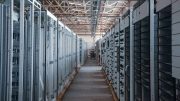The decentralized Web is an exciting new technology trend. Millions of people around the world embraced it. Some started developing it, others organizing it or providing the infrastructure it needs to function. While many decentralized web projects flourished between 2018 and 2021, I need to stress that there is a long way to go before the business models that claim to avoid being controlled by a centralized authority would mature.
I have begun testing the profitability of the Theta Token video delivery network by installing two Edge nodes and adding them to the Theta Mainnet 3.0. Each of the nodes is a Cloud Server with 8 CPU cores, 8 GB RAM, and 50 GB SSD storage that runs Windows 10. The market price of such cloud server hosting service varies between $100 and $120 per month depending on the cloud platform.
- HostColor offers Public Cloud with 8 CPU Cores, 8 GB RAM, 50 GB SSD Disk, High Availability, failover storage, and Windows 10 license for $145 per month.
- A DigitalOcean’s Cloud VM with 8 GB CPU, 16 GB RAM, and 100 GB SSD storage is priced at $160 per month. The cost of the Windows 10 license is not included in the price.
- Amazon EC2 sells a cloud server with 8 GB CPU, 8 GB RAM, and 50 GB SSD storage for $153.92/month. The cost of the Windows 10 license is not included in the price.
The average monthly profit of a Theta node in Theta Fuel (TFUEL), the company’s token, is anywhere between 10 and 15 TFUEL. The highest ever market price of the TFUEL token was $0.66. At the time I’m writing this post it is around $0.26. Based on these numbers, the maximum amount of USD a Theta Edge node owner would make is $9.90 per month. This is 12 – 15 times less than the market price of a Cloud server with 8 CPU Cores, 8 GB RAM, and 50 GB SSD Disk.
The very low-profit margins on the decentralized web suggest that it would stay a consumer-to-consumer business. The traditional markets where business entities operate, drive the economy forward and contribute to the national treasuries. Companies that operate Cloud infrastructures and deliver Cloud services cannot afford to provide IT infrastructure to the decentralized web networks at prices 10, 12, or even 15 times lower than the average market cost of their services. It would be an economic disaster for them.
For this particular reason, the decentralized web is still a home users’ game. However, even home users cannot be the backbone of the Theta or other decentralized web projects, simply because they cannot operate on a loss. As of today many contribute computing power decentralized networks driven by the expectations that the cost of the cryptocurrencies and crypto tokens would rise to levels that would bring them a good return on their investment. In the above-mentioned Theta scenario, Theta node owners would start profit if: a) they are able to make 5 – 8 times more TFUL out of their “8 CPU & 8 GB RAM” servers; or b) the price of the TFUEL surges to $5. Both scenarios would work on one condition the productivity of an “8 CPU & 8 GB RAM” node on the Theta network does not decrease.
To become mainstream in the digital economy, decentralized web networks need a solid and reliable technology infrastructure. Such comes at certain costs. So there are two options. Either the decentralized web would start paying more for its existence or it would not grow about its current status of unstable and unprofitable alternative.




